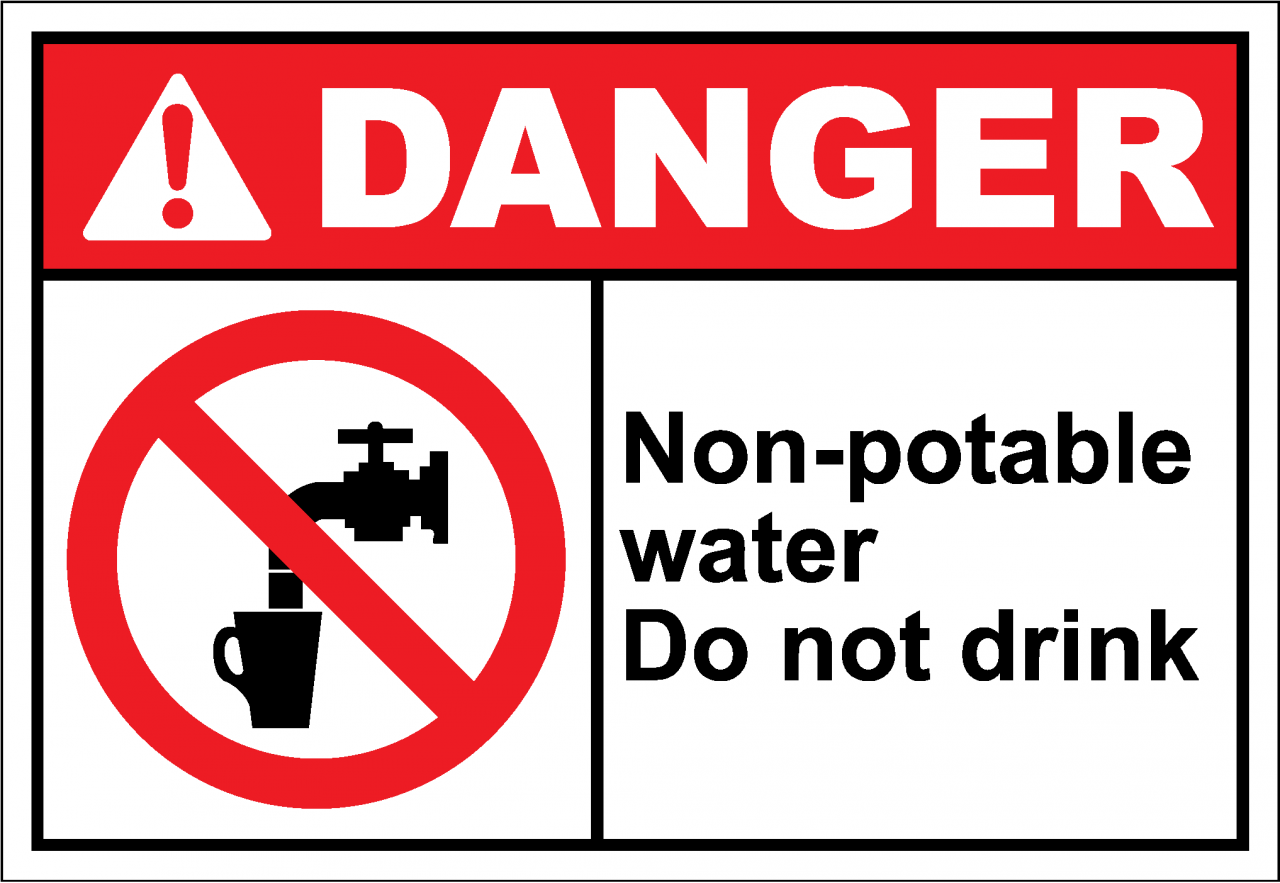Water, the elixir of life, flows through our narratives, binding together moments of human experience. Yet, amidst its ubiquitous presence lies a paradox: the dichotomy of potable and nonpotable water. Understanding these two classifications is akin to discerning between a clear mountain spring and a murky swamp—one is a necessity for survival, while the other serves as a cautionary tale.
At its core, potable water is the quintessential essence of hydration, suitable for human consumption without any adverse health effects. This pristine liquid, often referred to as drinking water, conveys a sense of safety and comfort. Imagine sipping from a crystal-clear stream, each droplet a promise of purity. Potable water is meticulously treated and monitored through rigorous filtration processes, ensuring that harmful contaminants are absent, saving us from maladies that lurk within unclean sources.
In stark contrast, nonpotable water evokes images of shadowy depths and enigmatic origins. This classification encompasses water sources that are not safe for drinking, typically laden with contaminants, chemicals, or excessive minerals. Picture a stagnant pond; while it may cradle life beneath its surface, tales of disease and death often resonate within its stillness. Nonpotable water, therefore, serves a different purpose, often found in industrial applications, irrigation, and even recreational purposes such as swimming, albeit with caution.
The quest for sustenance often leads us back to the sources of our potability. Municipalities engage in a meticulous ballet of sanitation, collecting water from rivers, lakes, or underground aquifers. This water undergoes a transformation, akin to a butterfly emerging from its chrysalis. The treatment plants administer filtration, chlorination, and sometimes, fluoridation, elevating it to the status of consumable. However, even potable water can be a double-edged sword, as its safety may falter when subjected to post-treatment contamination.
The fascinating voyage of groundwater—a principal source of drinking water—is a testament to nature’s artistry. Buried beneath layers of earth, it filters through rocks and soil, picking up minerals along its journey. In many regions, the aquifers serve as natural reservoirs, replenished by rainfall and contributing to caches of potable supplies. Yet, when mismanaged, these protected realms can become polluted, resulting in tragic outcomes. The juxtaposition of source and safety underscores the importance of preservation and mindful consumption.
Conversely, nonpotable water often carries a stigma, reminiscent of a forgotten freight train, laden with potential but fraught with peril. Its origins might range from untreated wastewater to runoff from agricultural fields, each carrying its own baggage of pollutants. The concept of graywater—recycled water from sinks, showers, and laundry—garnering popularity, showcases how ingenuity can repurpose nonpotable water for irrigation and landscape maintenance. Like an artist transforming rust into art, society begins to recognize the potential embedded within these resources.
The line between potable and nonpotable is not merely defined by safety but also by perception. Aesthetics play a crucial role; users’ acceptance often hinges on visual clarity, smell, and even cultural beliefs surrounding water sources. For instance, communities that have historically relied on surface water may perceive groundwater, despite its safety, as less appealing. This dichotomy reflects deeply rooted understandings of health, culture, and the human experience—an interplay where curiosity meets caution.
As global challenges intensify—population growth, climate change, and dwindling freshwater resources—the distinction between these two water types accentuates the need for sustainable practices. Innovations in water purification technologies and wastewater recycling are emerging as essential tools in the global strategy against the impending water crisis. Each drop reclaimed from the nonpotable pool holds the potential to alleviate the stress on potable sources. Like alchemists of old, modern engineers and innovators endeavor to concoct solutions that transform our perception and use of water.
No discussion of potable and nonpotable water would be complete without emphasizing the implications for health. Contaminated water sources can instigate a cascade of health issues from cholera and dysentery to more insidious long-term consequences such as heavy metal toxicity. The juxtaposition of the life-giving properties of potable water against the hazardous reputation of nonpotable water cannot be overstated. Thus, this exploration becomes not just an academic journey; it is a clarion call for vigilance and proactive stewardship.
In wrapping up this exploration, it becomes abundantly clear that both potable and nonpotable water play pivotal roles in our ecosystem. While we tend to glorify drinking water as the hero of hydration, nonpotable water operates in the shadows, often underappreciated yet undeniably essential in various contexts. Like a compelling narrative where every character matters, the nuanced relationship between these water types fortifies our collective responsibility to source, use, and conserve wisely. The stories of our waters are written not just in their physical properties but also in our respect, understanding, and reverence for this fundamental element of life.
